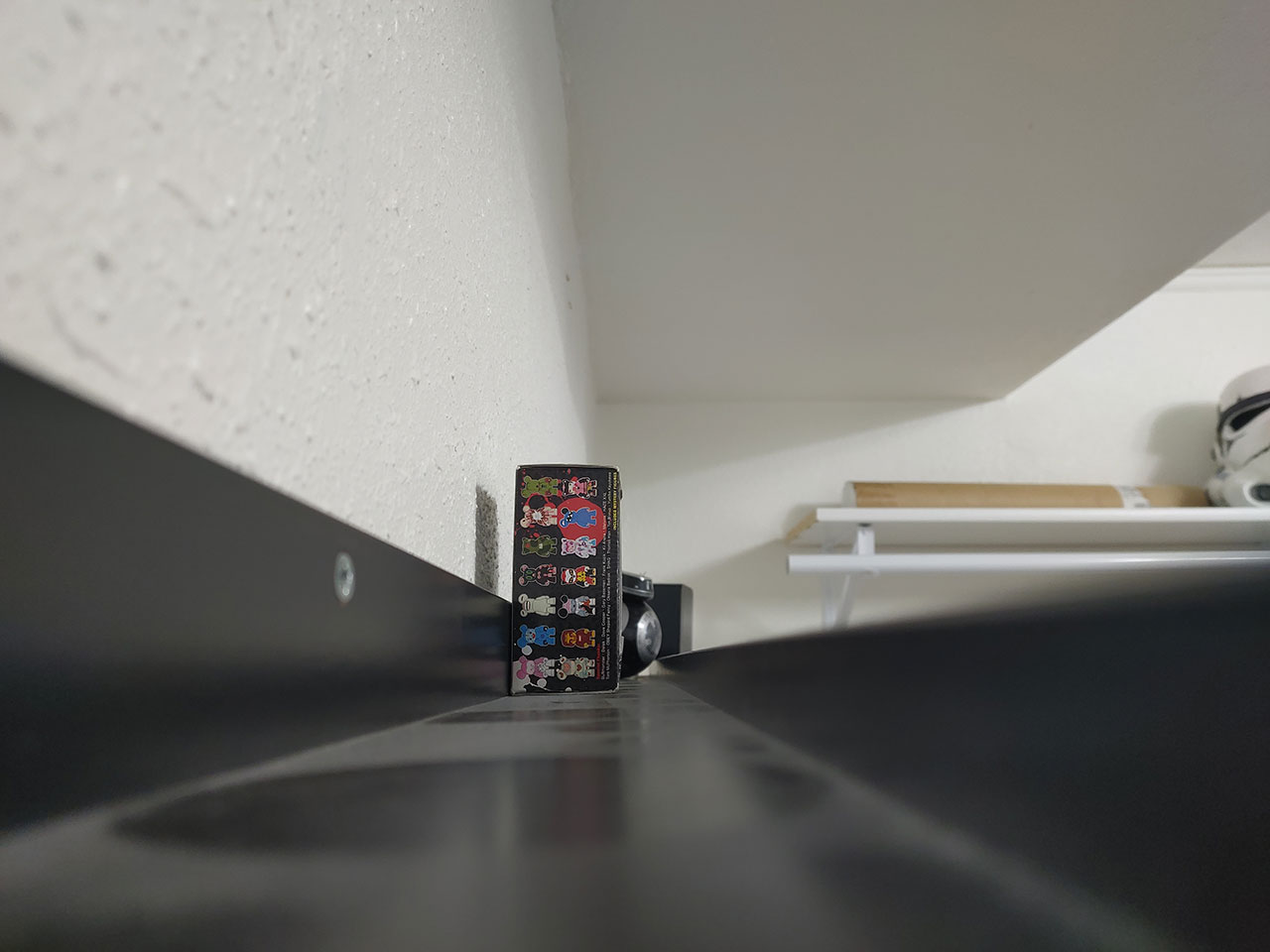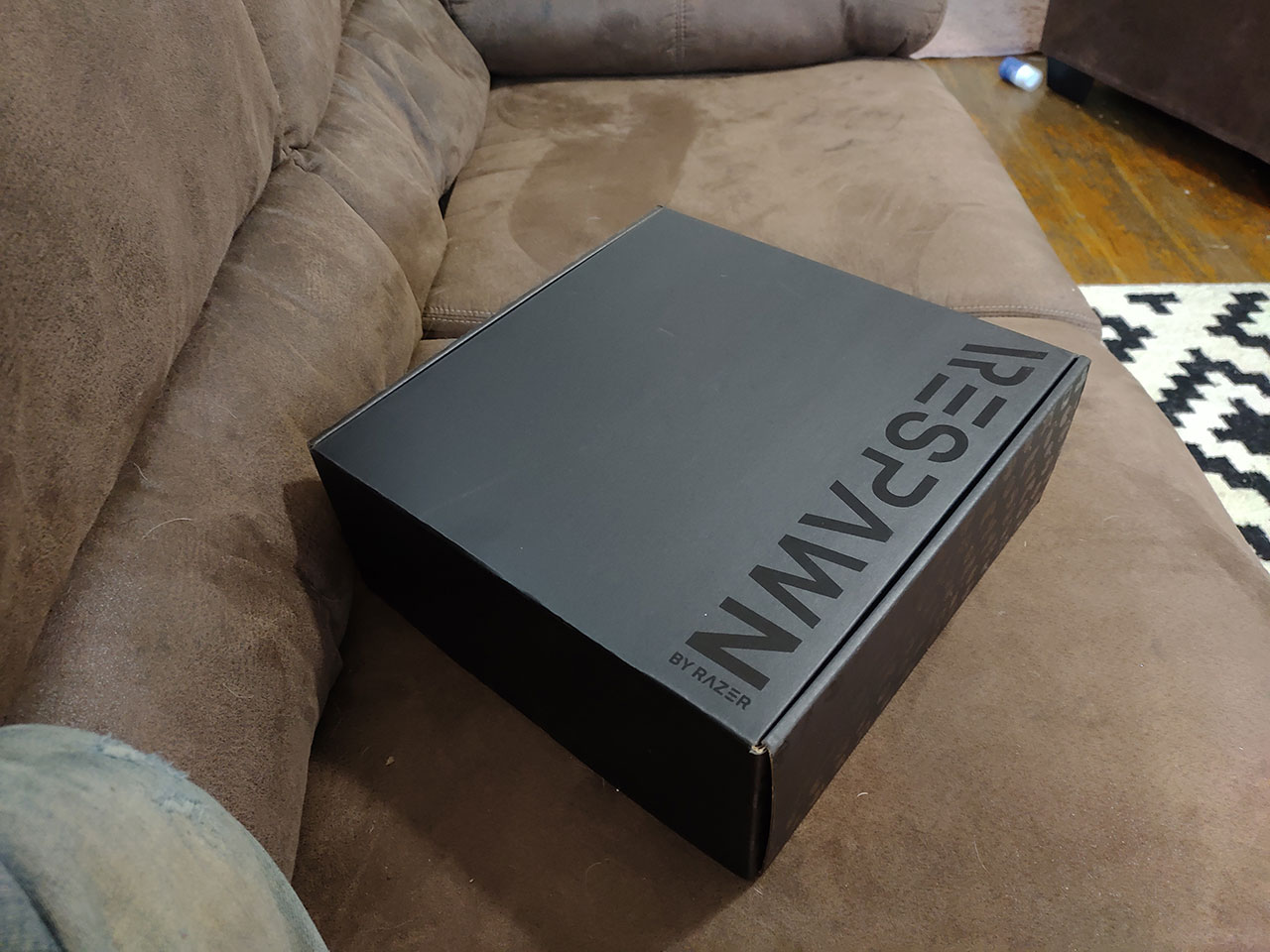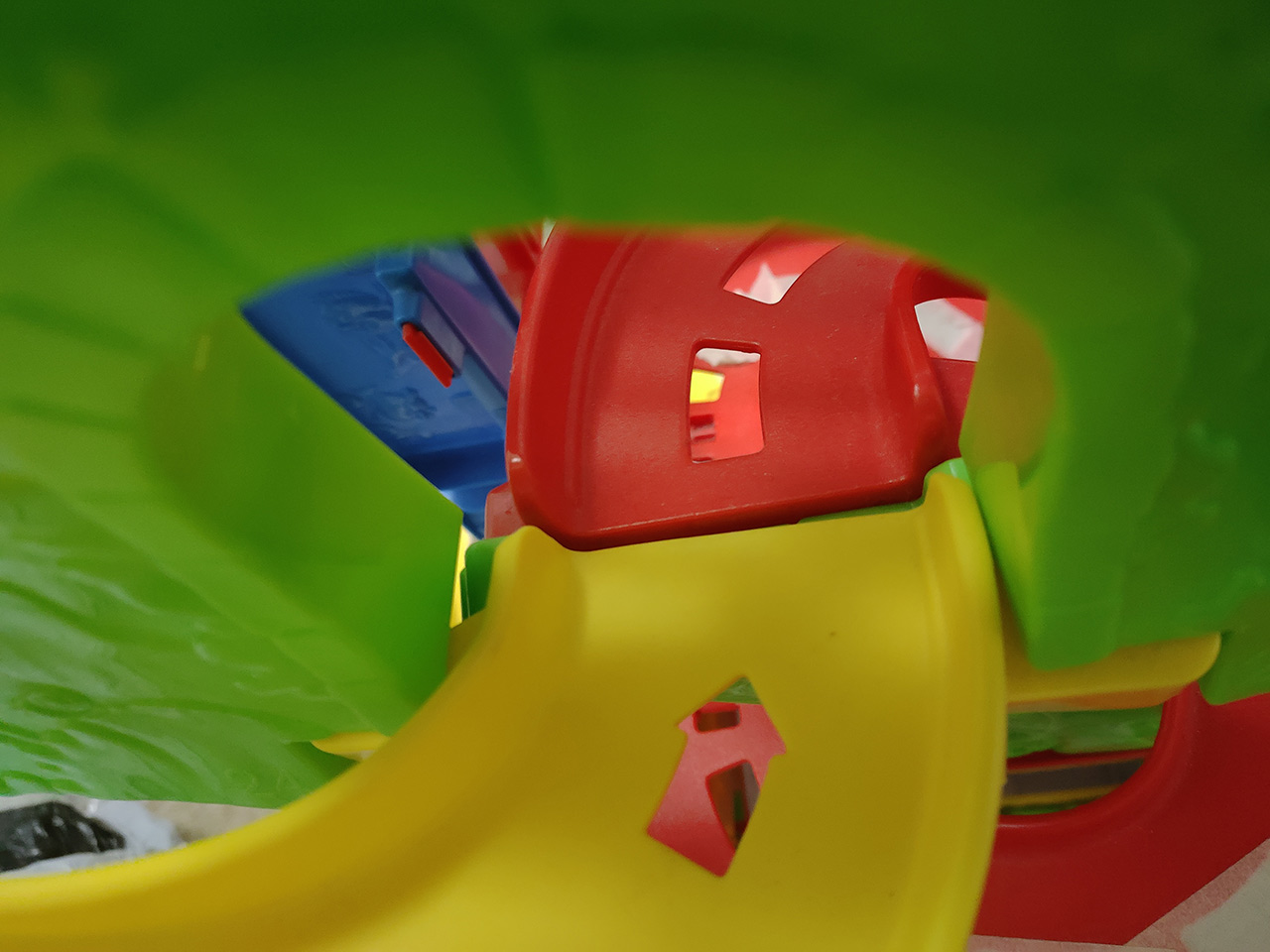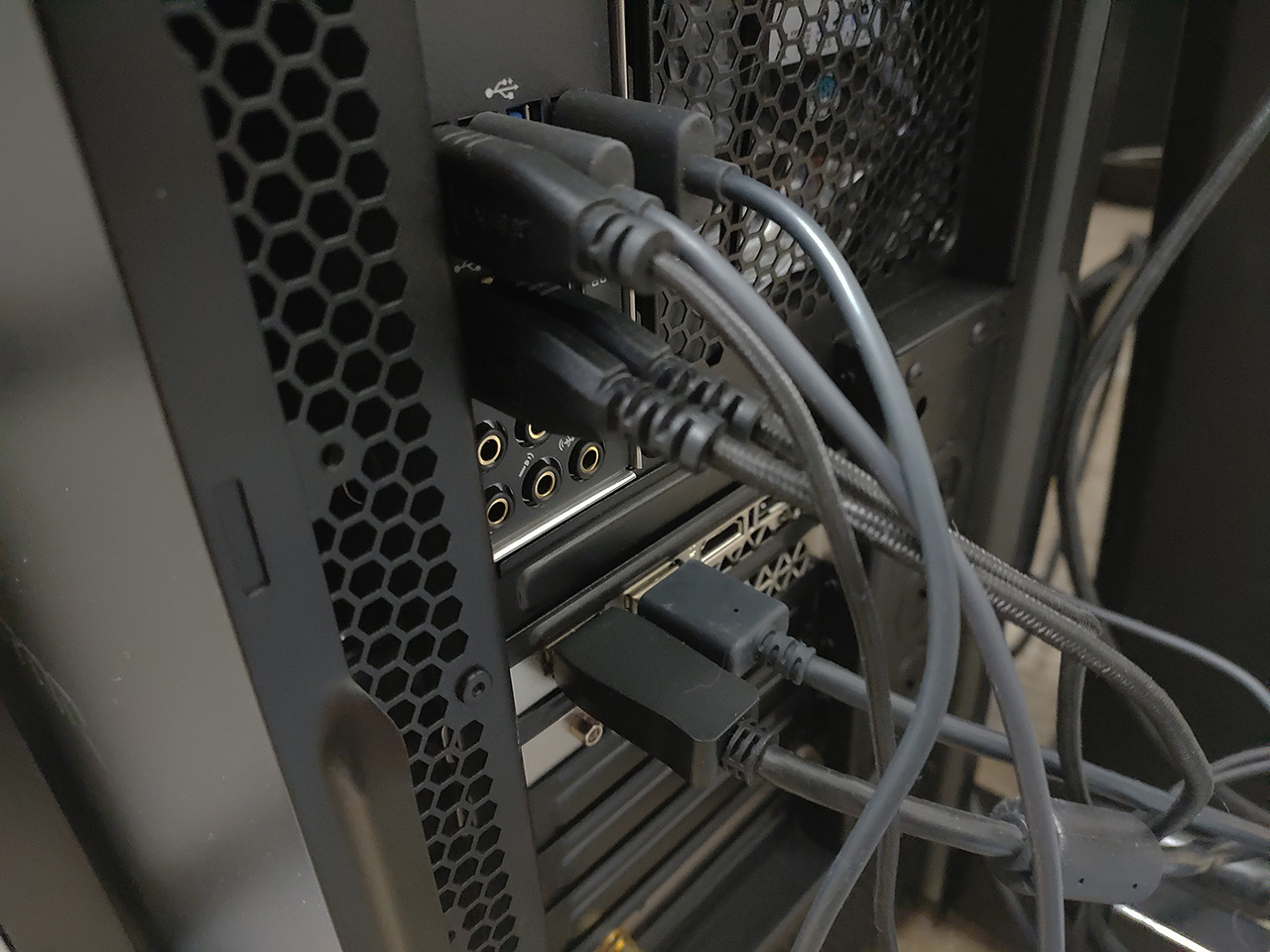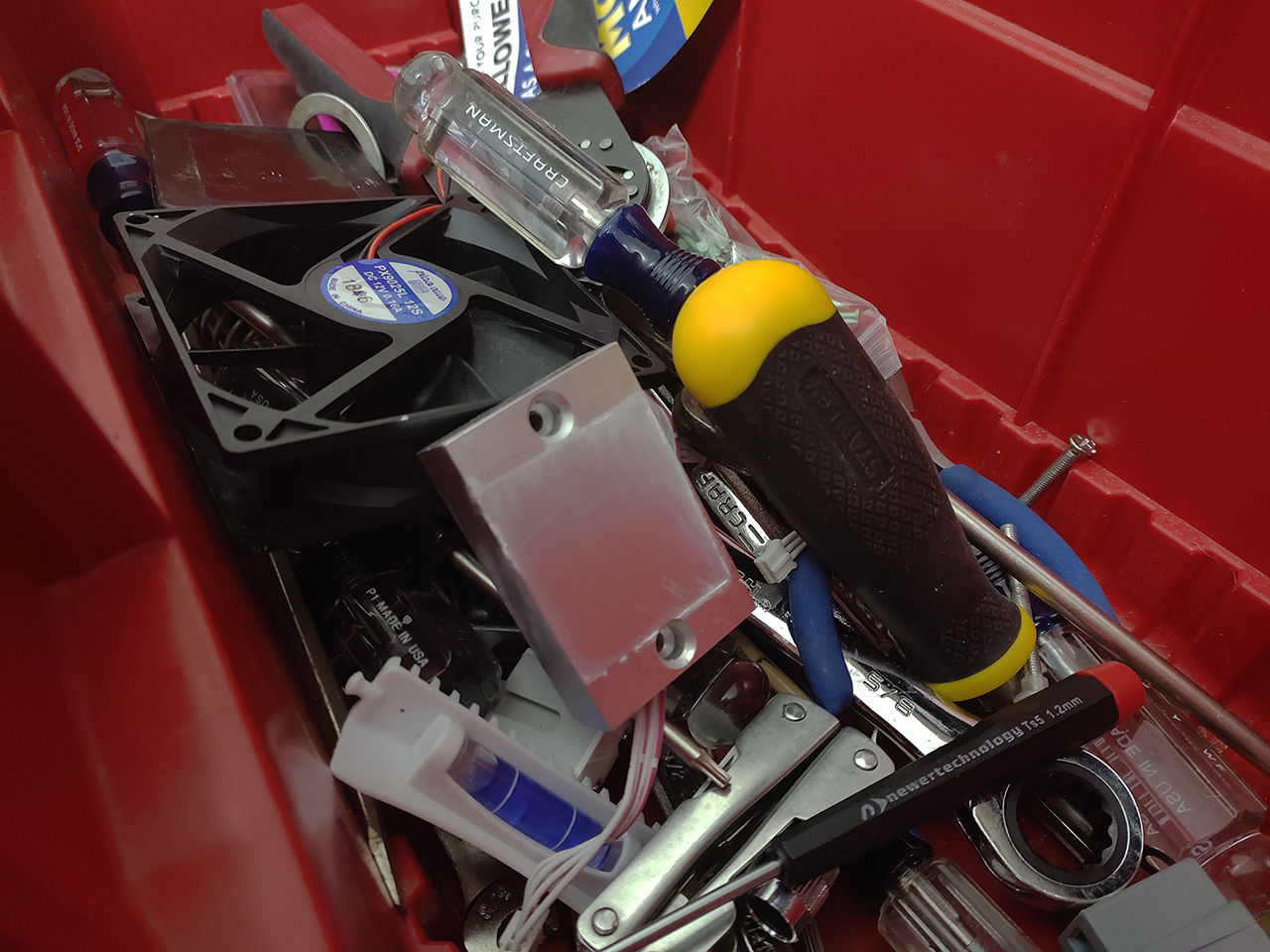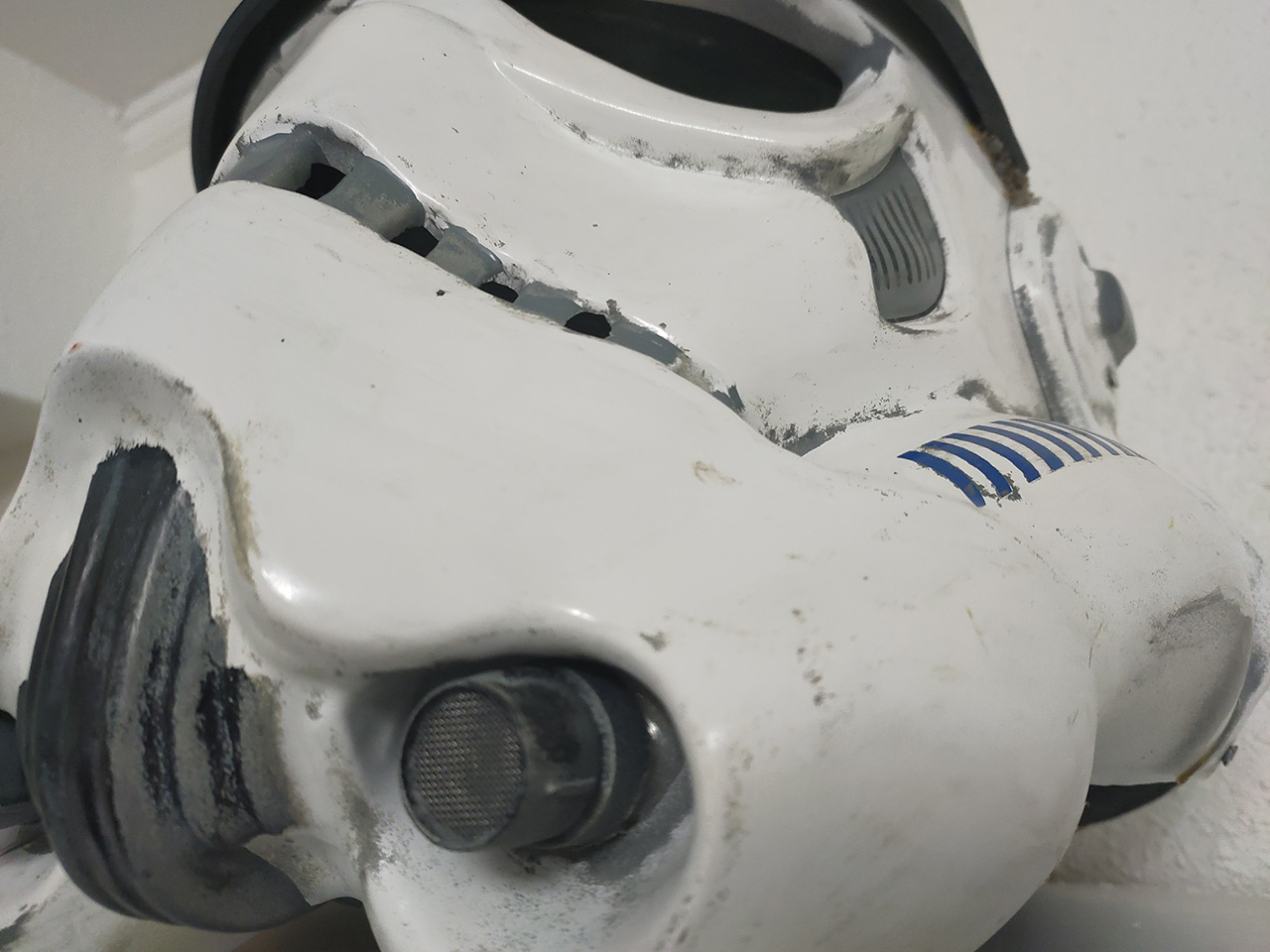Red Magic 3 Review : The Gaming Phone Sweet Spot
- Interesting additions/changes to Android
- Hardware switch launches Game Space 2.0
- Fan truly seems to keeps phone from getting too hot
- Camera is decent, especially for a single-lens setup
- Surprisingly affordable
- Case options are relatively slim
- No wireless charging
- No NFC
The Red Magic 3 is a gaming phone made by the company Nubia's gaming arm. This phone is a gaming machine first, and a smartphone second. It has a relatively large display with no notch and no camera hole, powerful "4D" haptic feedback, front-facing stereo speakers, and a sizable battery. With an approximately $479 starting price, the Red Magic 3 could be the most spot-on value in a gaming phone released by any company since the gaming phone trend began.
Gaming Hardware
The display on the Red Magic 3 gaming phone is 6.65-inches diagonally with 1080 x 2340 pixels to its name. This display panel uses AMOLED technology and has a 19.5:9 aspect ratio. Because of these pixels and inches of size, this device has a 388ppi (pixels per inch) pixel density.
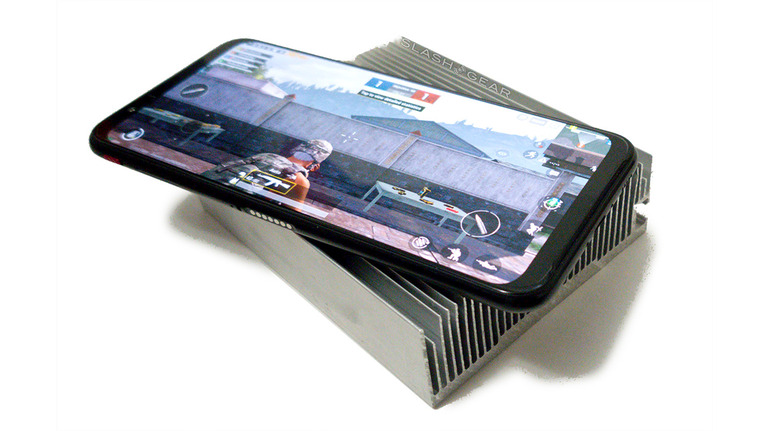
The display comes with a screen protector pre-installed over an unspecified generation of Gorilla Glass reinforced glass. We've got some 90Hz display action going on here – that's image refresh rate, not touch refresh rate. This 90Hz refresh rate works in a number of pre-selected games as well as any games you'd like to assign to the system.
As it is with the champion of display refresh rates, the Razer phone, this Red Magic 3 phone presents an experience that's a grade above the rest. If you spend a lot of time in games, watching movies, or generally interacting with media on your smartphone, these phones with refresh rates above 60 (that's pretty standard) make a world of difference. Now, if only the Red Magic 3 had an option to stay at 90 all the time, that'd be pretty cool.
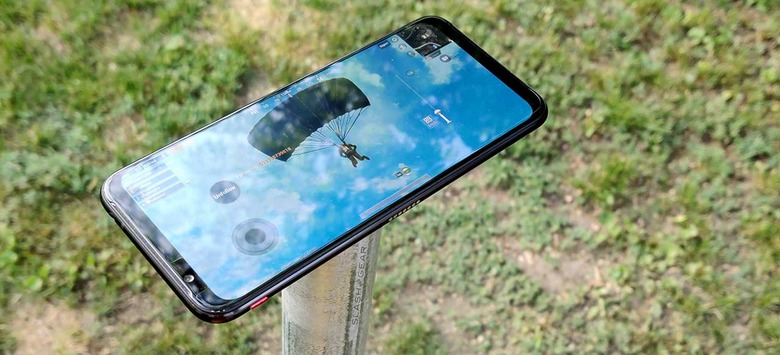
The display on this phone is big, but it's not particularly dense with pixels. Because of the standard layout of the home screens provided with the phone at the outset, everything feels a little overly-large. But once we get some adjustments in place – like for example Nova Launcher, everything can be sized similar to what you've seen on other phones, thereby essentially making the most use of the screen's physical scale.
Unfortunate for hardcore gamers, this device falls victim to the super-curved corners trend. This won't seem like a negative element to most users – but if you're really hoping to take advantage of a big display, a totally sharp, rectangular display is going to be the best way to cash in.
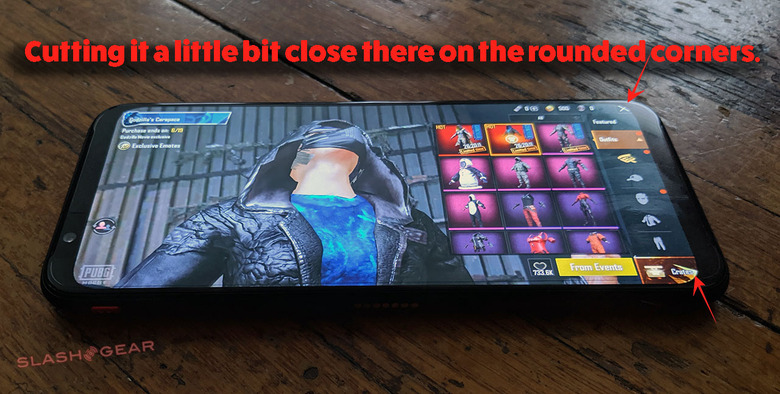
Fortunate for hardcore gamers and all users, alike, this phone does NOT fall victim to the notch trend, nor the "cut a hole in the display for the camera" trend. Instead, Red Magic 3 provides enough of a bezel to contain the front-facing camera and sensors – delivering a flat-sided display in the process.
Inside we're using a Qualcomm SDM855 Snapdragon (aka Snapdragon 855) processor (aka SoC or system-on-chip). There is no microSD card slot on this machine, so you'll be stuck with what you've got right out the gate. That means 64, 128, or 256GB internal storage, with 6, 8, or 12GB RAM, respectively.
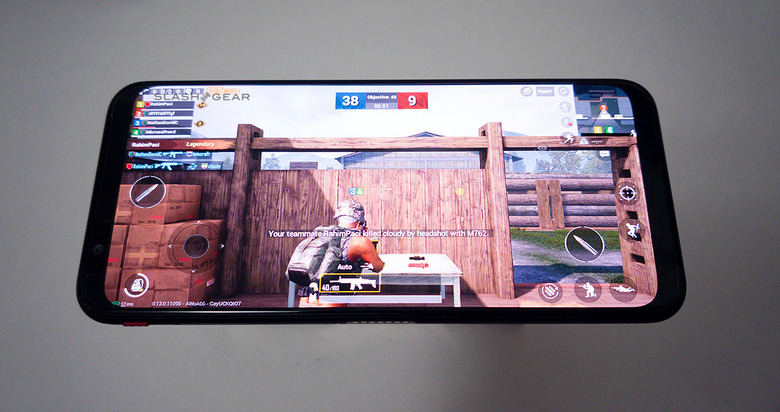
Performance is top notch! This phone performs extremely similar to the Xiaomi Black Shark 2 when it comes to raw processing power – since they use the same SoC. The Black Shark 2 has a Ludicrous Mode, this Red Magic 3 takes things up a notch with a whole set of Performance Mode options.
Users can choose to run Auto, of course, scaling according to each app's need. They're also allowed to hit "GPU Turbo" or "CPU Turbo" or just go all-out and tap "Super Performance"!
With the games that are available for Android (or any mobile platform, for that matter) the amount of processing power you'll get here is overkill. This isn't Crysis. I bet this phone could play Crysis, really – but we've got no good reason to be there, yet.
I mention there may not be a wide variety of cases available for this phone from 3rd-party manufacturers as a negative element in this review. This isn't an iPhone – people won't make their entire living selling smartphone cases made exclusively for this one model. Red Magic 3 is too niche to gamble on people needing enough cases to warrant a manufacturing run by a 3rd-party creator.
The positive side of the accessories and peripherals element is the add-on hardware Nubia/Red Magic have already made for this device. Unfortunate for us, we've not gotten to try them – but the pogo pins at the side of the phone show great potential.
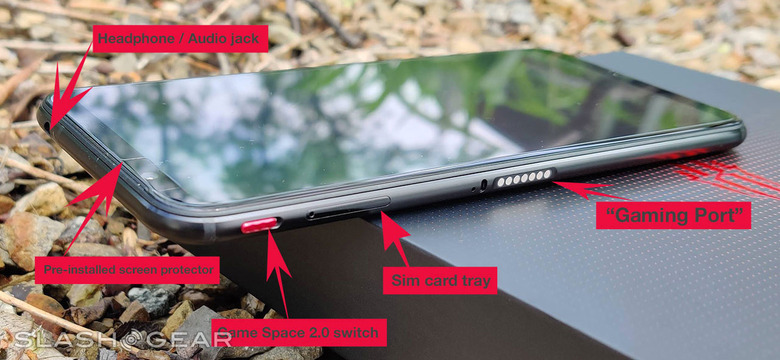
Game Space 2.0
The Red Magic Game Space is where this device really sets itself aside. Once you flip the red switch in the upper right-hand corner of the phone, you enter Game Space. This essentially transforms the phone from Android to Nubia's own software environment – a gaming space, where all buttons and gestures are given over to the game.
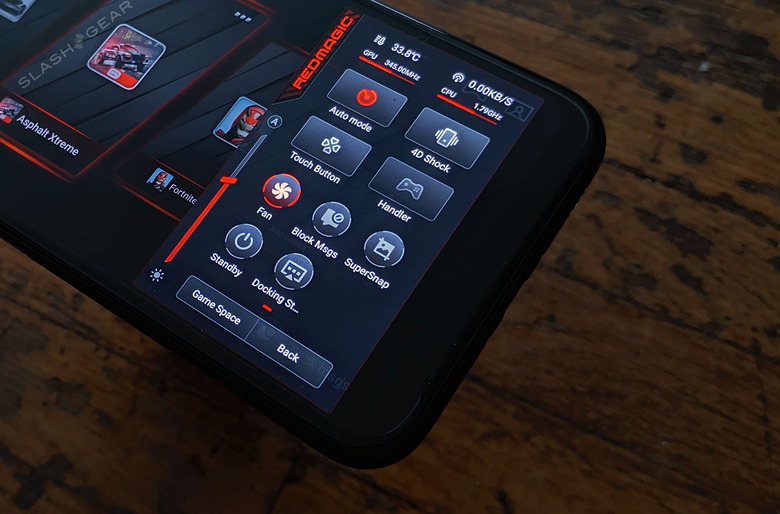
For example, normally when I swipe in from the bottom of the device's display, I get navigation buttons. When I'm on this Red Magic 3 phone and the Game Space switch is activated, I no longer get those navigation buttons when I swipe in. Instead I get a console of game-oriented options.
The speed and reliability of this gaming space, the launch speed, the always-available nature of the software, the flawless implementation, reminds me of how it feels to use an XBox – where everything just works. Where most Android gaming hardware is primarily focused on the hardware, letting the Android just exist, here Nubia made a system where the software and the hardware work in concert to make an experience that feels truly professional.
The bumper buttons give me that same feeling of robustness. When they're activated and I'm tapping, feeling the haptic feedback and seeing them work flawlessly on-screen, I feel like I've got a device whose creators were dedicated to making a high quality product.
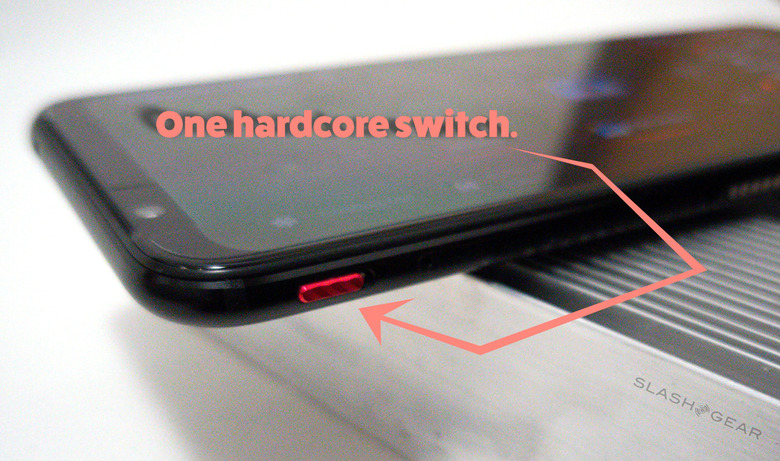
Bumper Buttons
On the right side of the phone are two indents with flat surfaces. These two spaces are actually programmable touch-sensitive shoulder buttons – it becomes more apparent when the phone is held in landscape mode.
The bumper buttons (as I call them) are called "touch buttons" in the phone's software. You can activate the feature inside a game by flipping on the gaming switch (the red switch) and swiping in from the right side of the screen, then pressing the Touch Buttons button. Once you tap this, you'll see a floating L and a floating R.
The touch buttons act like touches on your screen, and as such, they can be mapped to any function that'd otherwise be a simple touch on any spot on your screen. For some games, this is completely useless, for others, it's an advantage that's great for the fingers of the gamer – less stretching and straining is always good.
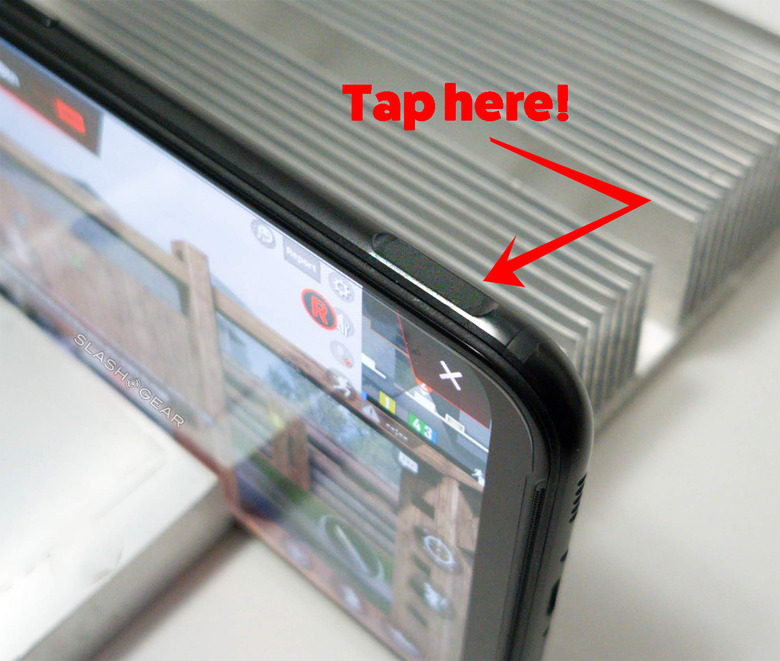
The Fan
There's a cooling fan inside this smartphone. It's approximately the size of the tip of your index finger, and it moves air from around the processor on out through the grill holes just to the side of the volume rocker.
If I were to take the phone apart, you'd find the fan and a channel made of metal through which air is moved, all above a section of thermal foam. The thermal foam is stuck to the top of some protective pieces of super-thin metal above the device's processor and motherboard.
Nubia suggested that this air vent and fan can cool the device by as much as 16-degrees. This fan, additional copper heat-piping, and the significant amount of thermal paste found on the opposite side of the processor means Nubia did not want to take chances with heat. NOTE: You can see the fan and the thermal paste in a JerryRigEverything video if you'd like to see.
The Lights
The back of this smartphone is accented with a series of LEDs shining from within. Near the bottom of the back is the Red Magic logo, lit like it's a gaming machine that's proud of its makers. This light can be activated or de-activated in the same settings panel as the light strip.
The light strip appears to be one continuous panel, when in reality it's lit by a series of around five (give or take a couple) LED lights capable of a large number of different colors. You can use this strip as a notification blinker, you can let it show when your Red Magic 3 is low on power, you can let the light show you when it's successfully charging up.
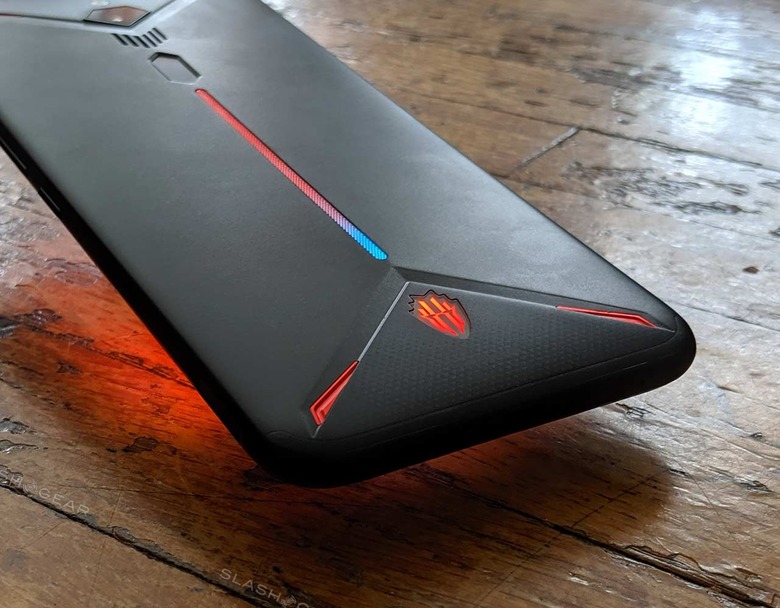
You can also make the strip shine in rainbow wave, or reacting to the beat of a song. You can have the light react and display according to the game you're playing – provided you're playing a game that allows such a thing to happen.
The lights are awesome, the lights are bright. The lights are unnecessary, but when you turn them off (thankfully you can turn the lights 100% OFF if you want), the phone still looks aesthetically pleasing. The logo is still a bright red logo, and the light strip you might never have known lit up if you'd never seen it alight.
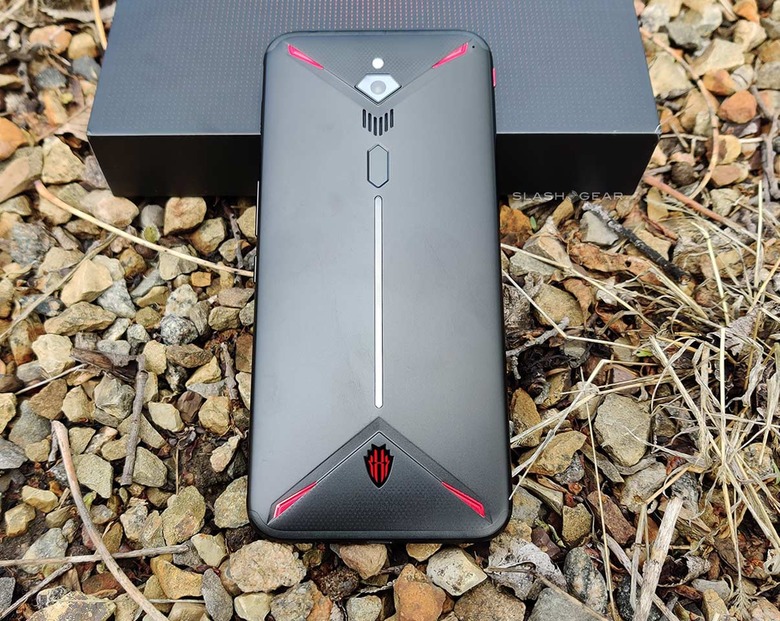
Camera
Contrary to the multi-cam trend to which most other phones seem addicted, this device sports a single back-facing camera. This device uses a Sony IMX586 sensor with a 48-megapixel rear camera and f/1.79 aperture. And a diamond-shaped pane of protective glass on top – to me, this means Nubia left no stone unturned when it came to the industrial design of this phone, and it's much appreciated.
The photos this smartphone captures are surprisingly decent. I say surprisingly because I'm so used to the only single-camera phone worth its cash being the Google Pixel. This might well be the only other single-lens back-facing camera to have been released in the year 2019 with a good-enough quality that I'd be OK with keeping in my pocket on a regular basis, with no other backup.
The camera is able to record in massive "8K" resolution – that's 7680 x 4320 pixels. It's not the most fantastic system for top-end video quality just yet – but just the ability to capture video at that size is a positive in a phone that costs hundreds of dollars less than competing phones with significantly more restricted video capture abilities – IF you need 8K video for whatever reason, that is to say.
The 8K video this device captures is also 15 frames per second. So it's not exactly on-par with standard video capture, which is generally 24fps or 30fps. It's OK, just as the other modes of video here are OK. Good enough to get a video of your dog jumping through a hoop to share on a social network – it's fine.
Speakers
The speakers on this phone are loud and capable of high-quality sound reproduction. These speakers are DTS:X/DTS 7.1 and 3D sound-capable. This means potential for high-end audio both with and without headphones.
The tuning of these speakers could do with a slight tweak, as it would seem that the earpiece-area speaker does mostly highs while the bottom seems to do full spectrum better – but it's my guess that some work with Viper4Android (v4a) should do the trick. We'll see if we get to keep the device long enough to root!
Battery
The battery inside the Red Magic 3 is a massive 5020mAh lithium ion cell, with charging voltage limited to 4.4v. The battery is rated at 5000mAh by Nubia (in their documentation) with support for 30W fast charging with USB-C. There is no wireless charging support – probably because this machine is made with metal and a big LED strip instead.
If you're using the GPU/CPU boosting Performance Mode options, you're going to go through battery life rather quickly. If you're not attempting to run the battery out as fast as you can, you'll get an easy day and a half out of this smartphone.
If, however, you treat the Red Magic 3 as intended, as a gaming machine, you'll find that it lasts at least as long as the Xiaomi Black Shark 2, and right around the same as the Razer Phone 2, all with their top-end capabilities in play. None of these phones seem to have any weak points with respect to battery life – a surprise bonus in the gaming phone genre, to be sure!
Wrap-up
The Red Magic 3 is a gaming phone with highly decent specs for a mere $479 USD. It's meant to look like a gaming phone and act like a gaming phone, so it has an LED strip down its back and red accents on black all over, as well as a 90hz-capable display. But this phone does not trap its user in a game-obsessed universe – the lights can be deactivated, and you can prolong your battery life to a great extent by skipping use of the phone's potential high refresh rate until you need it.
Because this phone presents a surprising number of positive features, very few drawbacks, and a top-notch overall package (software and hardware included), I recommend this phone quite highly. That's just so long as you remember that this phone is made for gaming first, everything else second – Red Magic 3 is definitely a gamer-oriented piece of hardware.
Versions of this smartphone include:
• 6GB Internal Storage + 64GB RAM Black or Red: $479
• 6GB + 128GB : n/a
• 8GB + 128GB : n/a
• 12GB + 256GB : Approximately $600 USD
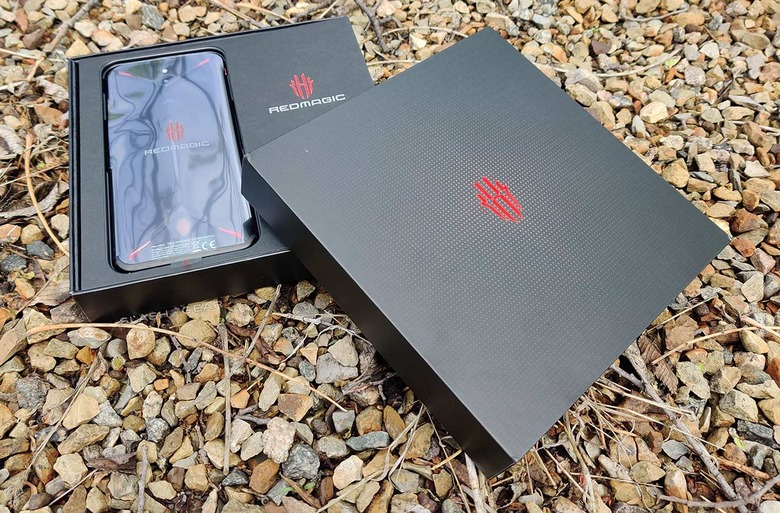
When selecting which version of this phone you'd like, take into consideration what you've already been using before now. If you've always wanted more internal storage for media, go for it. If you don't know what you'd do with additional storage, I'd say go for the least expensive version of this phone, in either Black or Red.
As I mentioned above, with processor performance, the difference between 6GB and 12GB RAM in a smartphone is negligible when it comes to the apps and games we have available in the world today. Once we start getting into using these phones as multi-app desktop-like workhorses, we'll see how important it is to have more RAM. For now, with 6GB you'll be just fine.
ABOUT THE NAME: This phone sometimes appears with "ZTE" in article titles, and that's not exactly wrong, but not entirely right. ZTE held majority stake in the Nubia Technology until 2017, when they reduced their stake to 49.9%. This makes Nubia an associate company of ZTE rather than a subsidiary. The brand Red Magic is the "gaming arm" of Nubia, and is generally found under the brand Nubia when you're looking for the phone in online stores and such – not confusing at all, right?



